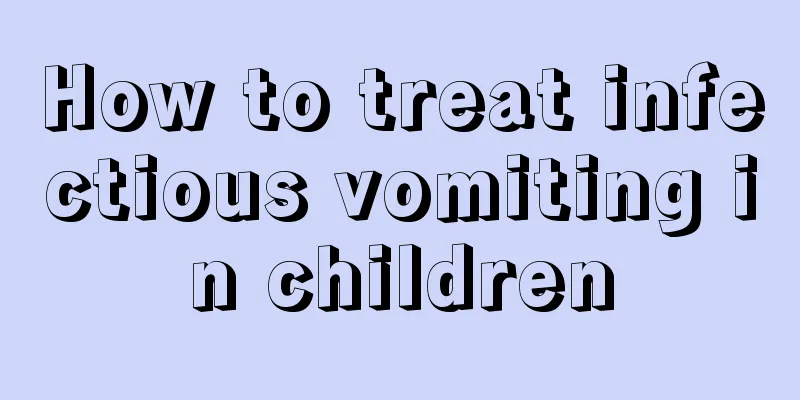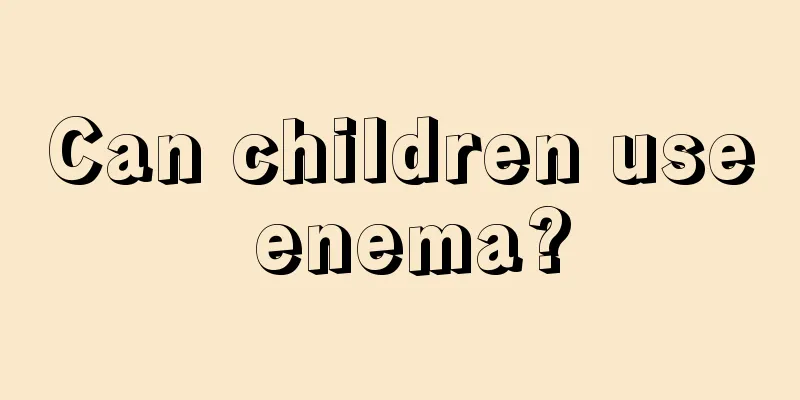How to treat infectious vomiting in children

|
Nowadays, the diseases that children get are becoming more and more unpredictable, especially infectious diseases. Once a child is infected with a certain epidemic disease, it will cause an epidemic on a large scale, and the harm caused to himself and other children is immeasurable. Therefore, it is necessary to treat this type of disease. Today I would like to introduce to you some relevant knowledge about infectious vomiting in children. Children have poorer resistance and are particularly prone to this disease in spring and autumn. The most likely cause is infectious enteritis or acute or chronic enteritis. Experts recommend that children go to a local children's hospital to prevent the condition from getting worse. The causes of vomiting can be divided into acute and chronic organic and functional, medical and surgical, etc. What is usually called vomiting in clinical practice actually includes two parts: regurgitation and vomiting, and there are many reasons for it. For ease of description, they are discussed below: (1) Nausea It refers to the phenomenon of non-forced digestive tract secretions or gastric contents flowing out of the stomach or esophagus, usually not accompanied by palpitations or forced abdominal muscle contractions. Regurgitation can be physiological or pathological. 1 Physiologically, infants who are a few weeks old may have milk (with or without milk lumps) in their mouths about 0.5 to 1 hour after birth, which is commonly known as "milk regurgitation". The baby's appetite, sleep, spirit and weight gain were normal. There is usually no obvious cause and the condition stops naturally within 7 to 8 months without any treatment. 2 Pathological: 1) Feeding problem refers to "vomiting" caused by improper feeding technique. For example, incorrect posture during breastfeeding (such as poor connection between the nipple, areola and baby's mouth, nose close to the breast, incorrect lying position, etc.), milk ejection too quickly, milk speed too large, baby sucking and swallowing too quickly, too much milk, inverted nipple and difficulty in sucking; low milk temperature during artificial feeding, small nipple hole diameter or insufficient calories in the milk, and infrequent feedings; babies often have non-nutritional sucking resulting in a lot of odor in the stomach and fail to stand up to expel gas after feeding, or provide various care to the baby after feeding (changing diapers, bathing, feeding medicine, etc.). It can be caused by giving solid food to infants who cannot chew it, forcing infants, especially premature infants, to eat, or feeding them before or after they cry. (2) Congenital esophageal obstruction is usually diagnosed by X-ray examination(1) Complete and incomplete obstruction caused by esophageal structural abnormalities and intraluminal and mural obstruction ① Congenital esophageal atresia: Esophageal atresia is a congenital malformation of unknown cause that is not uncommon in clinical practice, with an incidence of approximately 1 case in 4,000 live births. Esophageal atresia may or may not be accompanied by esophageal tracheal fistula but is often complicated by spinal, anal, heart, kidney and limb deformities. It is generally divided into five types, namely type I (both the proximal and distal ends of the esophagus are blind and there is no esophageal tracheal fistula), type II (the proximal end of the esophagus is connected to the trachea by a fistula, and the distal end is blind and connected to the lower stomach), type III (the proximal end of the esophagus is blind, and the distal end is connected to the trachea by a fistula), type IV (esophageal atresia, but the upper and lower segments are connected to the trachea by a fistula), and type V (the esophagus is patent, but there is a fistula running from the bottom to the front and top that communicates with the trachea somewhere) or type N. Type III is the most common, accounting for more than 90%, followed by type I, which only accounts for 5% to 7%. Children with congenital esophageal atresia have obvious dysphagia, namely foamy mouth and regurgitation of milk sweat in the early stage after birth, which is sprayed out from the mouth and/or nostrils. Because the milk sweat has not come into contact with gastric acid, the vomit does not contain milk clots or bile sweat. Newborns often experience dyspnea (dyspnea is an important symptom of respiratory insufficiency, which is the patient's subjective feeling of lack of air or labored breathing; and objective...) and cyanosis due to aspiration, which improves significantly after suctioning the "sputum". Such repeated attacks may lead to early secondary pneumonia (pneumonia refers to inflammation of the terminal airways, alveoli and lung interstitium, which may be caused by pathogenic microorganisms, physical and chemical factors, immune damage, allergies, etc.) and endanger life. Diagnosis is mainly based on taking upright chest and abdominal X-rays after inserting a No. 10 rubber or silicone tube into the food. Infectious vomiting in children is a very common disease. Drink plenty of water and avoid eating raw, cold, hard, spicy and other irritating foods. Diseases enter the body through the mouth, so do not eat unclean food and wash your hands frequently to prevent the growth of germs. Do not overeat, maintain a good mood and prevent your stomach from getting cold. After the symptoms are relieved, you should fast for a short time and eat light meals and liquid foods. The above is an introduction to infectious vomiting in children. I hope parents can understand it. |
<<: Kids' blocked nose remedies
>>: How to deal with a low-grade fever in a newborn
Recommend
What is the cause of a hard lump on a child's nipple?
Breasts actually have a very close relationship w...
12 years old pubic hair
Girls start to grow armpit hair after the age of ...
Why does my baby cry at night?
What should I do if my baby starts crying at nigh...
Will babies be allergic to taro?
Taro is a common food in people's daily life....
Is it normal for a seven-month-old baby to have a temperature of 373?
If a seven-month-old baby has a body temperature ...
What should I do if my child is prone to prickly heat?
Sweating is the main way for people to dissipate ...
How to treat bacterial infection and cough in children?
Children's resistance is much lower than that...
What to do if your baby has a cold stomach and vomits
There are many reasons for babies to vomit. Only ...
What should I do if my one-year-old baby has developmental problems?
Every baby captures the hearts of his or her pare...
How old does a child need to be to stop drinking milk powder?
Breastfeeding has many benefits for children, bec...
What are the symptoms of shock
Every change in the baby after birth is watched b...
Why does my child have a stuffy nose when he wakes up in the morning?
Nasal congestion is a condition that we often enc...
What is pediatric bronchopneumonia?
Pediatric bronchopneumonia is a common infectious...
How long does it take for baby conjunctivitis to heal?
Conjunctivitis is not unfamiliar to many people. ...
Newborn baby lying on his side
When a newborn turns sideways by himself, you don...









